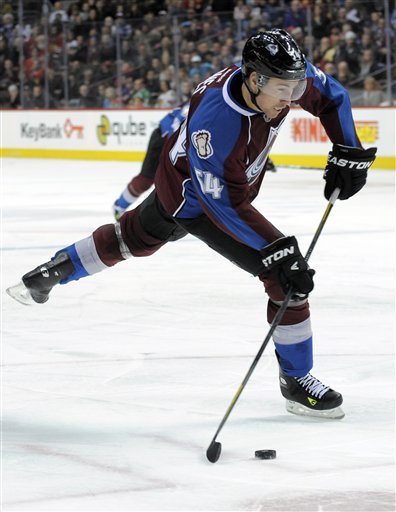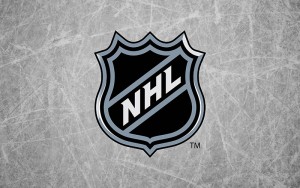The Colorado Avalanche secured one of their pending free agents yesterday by signing forward David Jones to a four year, $16 million contract.
“We are pleased to have him under contract as he enters the prime of his career,” general manager Greg Sherman said.
Jones, who was originally drafted by the Avalanche in 2003, has played five seasons in the NHL, totaling 67 goals and 50 assists in 239 regular season games. Jones has tallied 20 or more goals in each of the past two seasons.
“It’s j ust great to get a deal done this early in the summer,” said Jones, who lives in North Vancouver, British Columbia, in the off-season. “The most important thing for my family was to have some security and know I’m going to be in one place.”
ust great to get a deal done this early in the summer,” said Jones, who lives in North Vancouver, British Columbia, in the off-season. “The most important thing for my family was to have some security and know I’m going to be in one place.”
The Avalanche also signed defenseman Matt Hunwick to a two-year deal as well. However, the team is far from done with restricted free agents such as Peter Mueller, Erik Johnson, Matt Duchene and Ryan O’Reilly still left to be re-signed.
The extension handed out by the Avalanche to Jones could have far reaching implications not only for the remaining restricted free agents on Colorado’s roster, but also for unrestricted free agents throughout the league.
Consider a player like Jiri Hudler of the Detroit Red Wings, scheduled to become an unrestricted free agent on July 1. With 25 goals and 50 points in 81 games this season, Hudler’s offensive production eclipsed that of Jones, making the case the Hudler could easily ask at least $4 million a season in potential contract offers, citing Jones’ contract as an example, and could possibly ask as much as $4.5 or $4.75 million a season. Any of those would make for good raises over the $3 million Hudler made this past season.
Similarly, the Jones contract could have an effect on contract negotiations between the Philadelphia Flyers and Jaromir Jagr. Teams were hesitant to pay the superstar a bundle of money last summer when they didn’t know what kind of production they would get out of the 40-year-old who was just returning from playing several seasons in the KHL. Jagr ended up meshing well with linemates Scott Hartnell and Claude Giroux and finished the season with 19 goals and 35 assists in 73 games and then added another eight points in 11 playoff games. Jagr made $3.3 million on a one-year contract last season. If Jones’ contract is used as a benchmark, like Hudler, Jagr could see a raise coming his way.
Plus, higher contracts for mid-level players could also drive up the price for top-end talent. Could a player like Zach Parise reasonably expect to receive offers of $8 to $10 million per season? Of course teams will try to get creative and sign him long term with a front-loaded contract to help bring the cap hit down, but if Parise is capable of doubling the scoring of a player like Jones, should he get double the salary as well? As a former 90+ point scorer, Parise could see some hefty contract offers thrown his way this offseason by teams desperate for a top-end scorer.
It’s a slippery slope that general managers walk every summer. Of course you want to offer a player what he is worth in order to retain him, but you also don’t want to overspend on a player either. Ville Leino signed a six-year, $27 million contract with the Buffalo Sabres last summer with an annual cap hit of $4.5 million. Leino responded by rattling off a meager 25 points in 71 games. Leino still has time to prove himself, but his lack of production in the first year of his contract serves as a good warning to general managers looking to spend big bucks on free agents.
With Jones being among the first crop of pending free agents to re-sign with his respective club, his contract could now serve as a benchmark for other potential free agents – restricted and unrestricted – in terms of what those players could ask for and receive in the free agent market.



[…] awards in the $3.5 to $4.5 million range, with agents likely citing players such as Jiri Hudler and David Jones as similarly productive players. Both Hudler and Jones signed four-year, $16 million contracts this […]